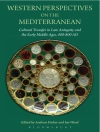The Ahmadiyya Muslim community represents the followers of Mirza Ghulam Ahmad (1835–1908), a charismatic leader whose claims of spiritual authority brought him into conflict with most other Muslim leaders of the time. The controversial movement originated in rural India in the latter part of the 19th century and is best known for challenging current conceptions of Islamic orthodoxy. Despite missionary success and expansion throughout the world, particularly in Western Europe, North America, and parts of Africa, Ahmadis have effectively been banned from Pakistan. Adil Hussain Khan traces the origins of Ahmadi Islam from a small Sufi-style brotherhood to a major transnational organization, which many Muslims believe to be beyond the pale of Islam.
Содержание
Introduction
1. Mirza Ghulam Ahmad Qadiani before Prophethood
2. The Prophetic Claims of Mirza Ghulam Ahmad
3. Authority, Khilāfat, and the Lahori-Qadiani Split
4. Politics and the Ahmadiyya Movement under Mirza Bashir al-Din Mahmud Ahmad
5. Religion and Politics after Partition: The Ahmadi Jihad for Kashmir
6. Early Opposition and the Roots of Ahmadi Persecution
7. Persecution in Pakistan and Politicization of Ahmadi Identity
Conclusion
Об авторе
Adil Hussain Khan is Assistant Professor of Islamic Studies at Loyola University New Orleans.












